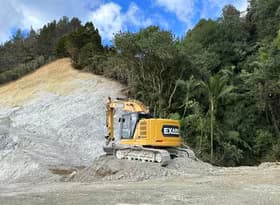
What are all these immigrants doing?
Annual net migration reached a new record high of almost 129,000 people in the year to October, despite net departures of NZ citizens surpassing the previous biggest outflow that occurred in the wake of the 2011 Christchurch earthquake. The influx of migrants is creating renewed demand pressures in the housing market. However, job ad numbers have fallen 29% over the last year and are now 12% below their 2019 pre-Covid levels.
This apparent softening in the labour market raises questions about how much longer rapid immigration can continue. We are in the process of updating our migration forecasts and revising the near-term outlook higher again, with the new projections to be published on 2 February. This article examines which industries and occupations are dominating the surge in immigration, with these characteristics helping inform our migration outlook.
The Green List defines the immigration rebound
Chart 1 shows the 18 industry groupings (out of a total of 87 industry groupings) where the non-NZ-citizen workforce has increased by more than 1,000 people between September 2019 and September 2023. Although we have selected the industries in Chart 1 based on the increase in the non-citizen workforce since 2019, the data in the chart shows the change in the make-up of each industry’s workforce between September 2022 and September 2023. This timeframe allows us to highlight several trends in the data over the last year and provides a more current or timely insight into the surge in immigration since the second half of 2022.1
The industries are largely as expected, with strong representation from construction and engineering, health and aged care, and agriculture and food manufacturing. These industries reflect strong demand for workers, allied with changes in the government’s approach to immigration, particularly the establishment of the Immigration Green List in mid-2022. It now appears to be considerably easier to bring in workers to fill roles on the Green List compared with the Skill Shortage Lists that were in place prior to Covid.
The large number of administrative services migrant workers reflects the number of migrants employed by labour hire firms (which sit within this industry). These workers are then hired out to another business. The administrative services industry also includes packaging operations for fruit and vegetables.
A widespread increase in recent residents
At a nationwide level, there has been an increase of 61,000 workers classed as recent skilled residents during the last year and over 112,000 across the last two years (see Chart 2). Rather than reflecting new arrivals at the border, this surge has been caused by the special 2021 Resident Visa, which was effectively offered to everyone on a more temporary visa who had got stuck in New Zealand when the borders shut due to the pandemic. Many people in New Zealand on three-year work visas would not otherwise have become eligible for residency.
The most significant effects seem to have been in the health and aged care industries.
It’s worth noting that although the 2021 Resident Visa has not boosted migrant arrival numbers in recent times,2 it has meant that fewer foreign citizens have been leaving the country because their temporary three-year work visa has been superseded by the resident visa. In other words, the 2021 Resident Visa has been a contributing factor to higher net migration over the last three years than would otherwise have occurred, not through more recent arrivals, but through fewer migrant departures.
Accredited Employer scheme defines key industries
The creation of the Accredited Employer Work Visa scheme has seen more than 52,000 people added to the workforce over the last year. This figure sounds large in isolation, but it needs to be considered in tandem with the decline in people on Essential Skills Work Visas of almost 45,000 since 2019 (see Chart 3). The switch in visas away from Essential Skills to the Accredited Employer scheme accounts for most of the “other” declines shown in Chart 1, along with smaller falls in worker numbers in the Post Study Work Visa and Work to Residence Visa categories.
Employment in construction-related industries appears to have been most significantly boosted by the access to workers under the Accredited Employer scheme.
Working holidays are back on the table
The number of people on Working Holiday Visas surpassed its 2019 levels in mid-2023, allowing for the usual seasonality that sees worker numbers lower between July and September than in other months. The 91% reduction in the workforce on Working Holiday Visas by early 2022 alongside a 66% fall in people on Student Visas had a disproportionate effect on the likes of agriculture, retail, hospitality, and tourism-related industries (the latter two don’t appear in Chart 1). These industries have benefited from improving access to staff as Working Holiday Visa numbers have increased throughout 2023.
Growth occupations match the industrial mix
Although they’re not a perfect match with the visa data, occupation figures collected from arrivals cards reinforce the insights gleaned above. Chart 5 shows selected occupations with the biggest increases in arrival numbers between either 2019 and 2023 or 2022 and 2023. Key occupations in several of the industries featured in Chart 1 appear in Chart 5.
Is a turning point coming?
Data to date shows little or no sign of the influx of immigrants starting to ease. The best indication of any moderation we have so far is an 8.2% dip in the trend number of monthly work visa approval numbers since March 2023 – a shift that might be expected to start showing through in arrival numbers in early 2024.
However, as economic activity continues to come under pressure this year, demand for additional workers seems likely to soften in some industries, such as residential construction, retail, and parts or the primary sector – if it hasn’t already. Furthermore, the rapid and somewhat delayed recovery in Working Holiday Visa numbers should also level off during 2024.
Expectations of a turning point for immigration across some other industries and occupations are less clear cut. Areas such as healthcare, civil construction, and transport still appear to be somewhat under-resourced in terms of worker numbers, suggesting that immigration flows across these industries could remain relatively high.
Hovering above these specific factors is a consensus among forecasters that, during 2024, the unemployment rate will continue the upward trend exhibited since March 2023. But even then, a lift from its current level of 3.9% towards 5% by the end of this year still implies a labour market that is reasonably tight, in which some industries will continue to suffer specific skill shortages.
Against this backdrop, it is clear that migration continues to pose upside risks to the economic outlook, with associated demand threatening to stretch capacity across the housing and retail sectors. Managing migration settings throughout 2024 and 2025 shapes as a balancing act for the government between meeting business demands for more workers and getting New Zealand’s population growth back on a more sustainable track.
2 The latest data, for the June and September 2023 quarters, is provisional, so should be treated with some caution.
3 Instead, these people were recorded as migrant arrivals in the “unintentional” migration seen in late 2019 and early 2020, being confirmed as migrants after they had stayed for 12 months due to the borders being shut.
































